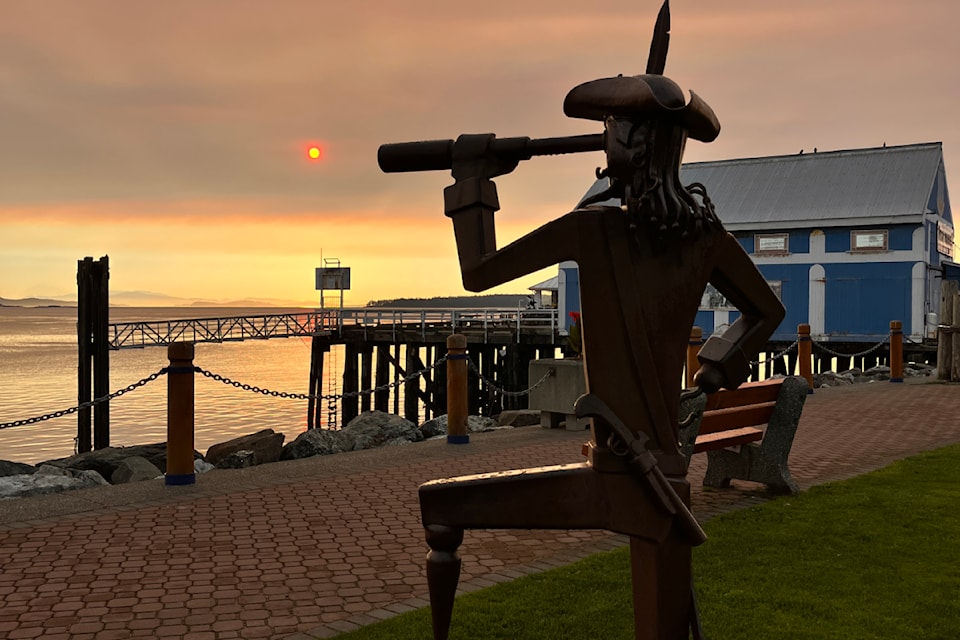Top Stories
Residents of Greater Victoria Face Ash-Covered Cars and Apocalyptic Sun

Residents of Greater Victoria, British Columbia, were met with an unsettling sight on the morning of September 17, 2023. Cars were blanketed in ash, and the sun appeared apocalyptic as the community sought answers through social media. Initial speculation pointed to ash from the 1980 eruption of Mount St. Helens, but further investigation clarified the situation.
The US Geological Service (USGS) issued an alert indicating that strong easterly winds could be resuspending volcanic ash from the 1980 eruption of Mount St. Helens. This ash was reportedly being carried west-northwest, affecting areas more than 400 kilometers south of Victoria in Washington State. The USGS noted, “This phenomenon is not the result of recent volcanic activity and occasionally occurs during times of high winds and dry snow-free conditions in the Mount St. Helens area.” They also warned that “resuspended volcanic ash should be considered hazardous and could be damaging to aircraft and health.”
Despite the USGS’s findings, local officials indicated that the ash falling in Greater Victoria was likely not from the historic volcanic eruption. A spokesperson clarified that the ash observed in the region appeared more akin to forest fire ash, which is typically black and water-soluble, in contrast to the light grey, fine particles characteristic of St. Helens ash, which resembles baby powder.
Wildfire Season Intensifies in British Columbia
The current wildfire season in British Columbia adds a critical layer to the situation, with approximately 125 wildfires burning across the province. This year’s intensity is compounded by several active fires south of the border in the United States. The ongoing wildfires contribute to poor air quality across the region, as illustrated by the online mapping tool BlueSky Canada. This tool provides smoke and fire weather forecasts produced by the Weather Forecast Research Team at the University of British Columbia.
On the morning of September 17, BlueSky Canada indicated that smoke particulates were moving over the eastern coast of Vancouver Island, although conditions were expected to clear by midday. At that time, Environment Canada predicted that air quality in Victoria and the West Shore would reach a “moderate risk” level, returning to low risk overnight and into Thursday. The rest of Vancouver Island was expected to remain at low risk.
Local residents are encouraged to stay informed about air quality and wildfire status through resources like firesmoke.ca. As conditions fluctuate, photos and reports from the community are welcome, with an invitation to share images of the ash and smoke by emailing [email protected].
As this unusual weather phenomenon unfolds, the combination of historical volcanic ash and ongoing wildfires presents a unique challenge for residents of Greater Victoria, highlighting the complex interplay between natural events and air quality in the region.
-

 Science2 months ago
Science2 months agoToyoake City Proposes Daily Two-Hour Smartphone Use Limit
-

 Health2 months ago
Health2 months agoB.C. Review Reveals Urgent Need for Rare-Disease Drug Reforms
-

 Top Stories2 months ago
Top Stories2 months agoPedestrian Fatally Injured in Esquimalt Collision on August 14
-

 Technology2 months ago
Technology2 months agoDark Adventure Game “Bye Sweet Carole” Set for October Release
-

 World2 months ago
World2 months agoJimmy Lai’s Defense Challenges Charges Under National Security Law
-

 Technology2 months ago
Technology2 months agoKonami Revives Iconic Metal Gear Solid Delta Ahead of Release
-

 Technology2 months ago
Technology2 months agoSnapmaker U1 Color 3D Printer Redefines Speed and Sustainability
-

 Technology2 months ago
Technology2 months agoAION Folding Knife: Redefining EDC Design with Premium Materials
-

 Technology2 months ago
Technology2 months agoSolve Today’s Wordle Challenge: Hints and Answer for August 19
-

 Business2 months ago
Business2 months agoGordon Murray Automotive Unveils S1 LM and Le Mans GTR at Monterey
-

 Lifestyle2 months ago
Lifestyle2 months agoVictoria’s Pop-Up Shop Shines Light on B.C.’s Wolf Cull
-

 Technology2 months ago
Technology2 months agoApple Expands Self-Service Repair Program to Canada









